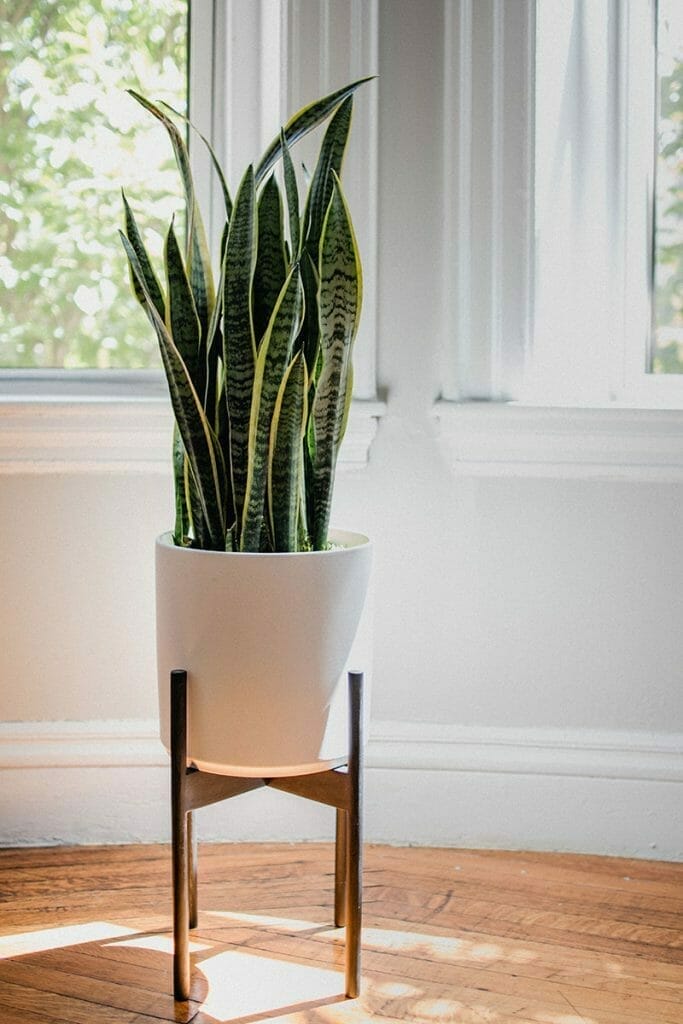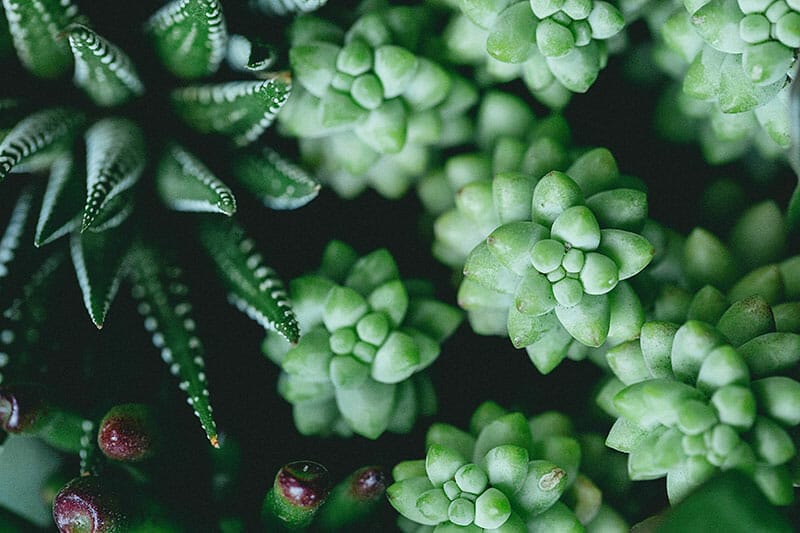When I was growing up my mother grew plants all over the house. She still does. To say that she has a green thumb is an understatement. Some say that the term “green thumb” has roots in the old English proverb about millers and their “golden thumbs” stained yellow from constantly handling wheat. Gardeners, on the other hand, were deemed to have green thumbs when the algae and moss growing on pots rubbed off on their fingers. But whatever the origin and true meaning, my mom defines the term green thumb.
I don’t have the green thumb my mom does, but I do okay. Over the years I’ve developed an immense fondness for succulents. They’re beautiful plants, and more importantly, they aren’t needy. Unlike my ivy plants that grow depressed if I forget to water them, my succulents thrive on inattention. This makes them my favorites.
There are many types of succulents, and you can find the more common ones at home stores like Home Depot or Lowe’s. Other more exotic types are easily found in nurseries and online, and even on Etsy. Succulents are basically the camels of plants, storing water in their leaves which enables them to survive dry and sunny climates.
While succulents are “easy” plants they require three essential things.
First, light is absolutely key for a succulent’s survival. Some varieties need full sun, while others thrive in bright light without direct rays, but no shady corners or dimly lit bathrooms will do. Succulents who don’t receive the appropriate amount of light become thin, sickly looking, and “leggy” where they grow and stretch out of shape seeking light. If you’ve ever seen The Little Mermaid and noticed Ursula’s writhing sea creatures on the dark floor of her lair, that’s what succulents that don’t get the proper lighting begin to resemble.
Second, never overwater. If you think you’re under-watering, then you’re doing it right. Once a month is good, once every month or two is better. Overwatering is the quickest possible way you can drop the hammer on a succulent, creating mold and root rot.
Three, never use regular garden or potting soil. Use the specialty mix for succulents and cacti (easily found at any garden section). Regular potting soil is too dense and moist, and without excellent drainage and sandy soil, succulents are prone to root rot.
I have three favorites in my home, which I’ll show here. But there is an entire exotic universe of succulents, from tiny plants that look like stones, pink and purple leaves, exotic cacti blooms, jade plants that look like trees, and long strings of pearl plants that are nature’s jewelry.

“Snake Plant” or “Mother-In-Law’s Tongue”
Dracaena trifasciata (also known as Sanseviera) is this plant type’s official name, but using the word snake or mother-in-law is so much more fun when referencing your house plant. A native plant to Africa, these tough mothers can be watered every 2-8 weeks (I stick to the 8-week schedule to make sure the soil is completely dry). In bright light they grow quickly, in less bright light they still grow but at a much slower pace. Out of all the succulents I’ve had over the years, these do the best without direct sun, but they do need to be near a window. Some varieties are tall and spiky, others are smaller and less bold.
My Mother-In-Law’s tongue plants came from cuttings my mother gave me from an original plant given to her by her mother-in-law, which was given to her by her mother-in-law (try saying that three times fast). So while we’ve broken the “in-law” chain of command, these plants have been loved by the women in our family for four generations.

Aloe
The squishiest of squishy plant leaves, besides being pretty, aloe has historically been used for lotions, medicines and gels for thousands of years. In tropical areas of the world, aloe grows wild and originates in the Arabian Peninsula. This particular succulent doesn’t necessarily need blazing sunlight, but a well-lit window is key. Aloe comes in many varieties with sweet names like Aloe Blush, Aloe Sunset, and Aloe White Fox.
While some people still use aloe for cuts, burns, or other “around the house” remedies, I don’t. I like to stick with the tried and true scientifically tested pharmaceutical items in my local pharmacy. So please refer to your local pharmacist or doctor if you’re interested in using these plants for anything other than beautifying your home and improving its air quality.

Donkey’s Tail
My favorite of all succulents, Sedum morganianum, is a flowering plant from Mexico and Honduras. Also called burro’s tail, it has full blue-green leaves that trail and spill out of containers in a way in which ivy can’t compete. My donkey tail plants are also very good at communicating their needs because when they need water, their leaves begin to take on a bit of a deflated raisin-like appearance. When I water them (oftentimes a month or two apart), their wrinkled leaves will plump back out as good as new within a few hours.
This type of succulent is easy to transplant. Simply snip off a strand of your Donkey’s Tail, stick it in a pot filled with sandy succulent friendly soil, and do NOT water it for at least a couple of weeks (this can cause root rot). Some gardeners and plant enthusiasts use a root powder to encourage growth, but I’ve never really found a need for that with Donkey’s Tail. I’ve created several plants from my large original plant.
So do a deep dive into Google and discover the wide world of succulents. Buy some. Plant them. Forget about them. It’s the easiest house plant relationship you’ll ever have.


